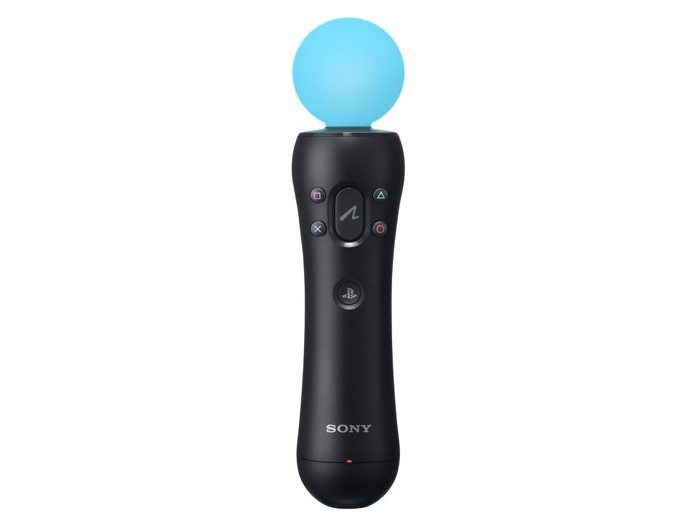Why you can trust TechRadar

In the games Sony provided us to test with, we were able to get a feel for much of what's possible with Move, but we also became aware that these tests are somewhat limited by the way the games are programmed.
This has always been one of the Wii's biggest caveats, and the worry is always that games will use motion sensing in a way that really should have just been achieved with buttons.
With that in mind, we can safely say that we came away hugely impressed with what Move can do, but it still needs a careful, measured implementation.
The controller's ball certainly seems to offer an accuracy of pointer movement that goes beyond what the Wii remote is capable of. The idea that it could be as accurate as a mouse is probably a bit ambitious, but it's good enough that we could see it giving real-time strategy games, and a few other genres that do better on PCs, a new lease of life on consoles.

When you navigate the XMB with the Move controller, you point it at the screen, hold trigger, and then point it up, down, left or right to move in that direction in the menu.
Interestingly, the ball stays dark during this time, so it seems to be using only the motion sensing capabilities, but it's so fluid and accurate that you wouldn't know the difference.
When the ball is being used as a pointer, we found that it often only operated in a very narrow field compared to the Wii, which isn't necessarily a bad thing, but it makes navigating some menus a little more fiddly than we're used to. On the other hand, it works perfectly at much further distances than the Wii remote is capable of.
Sign up for breaking news, reviews, opinion, top tech deals, and more.
There are several games where the orb needs to be visible to the camera, even when you'd think the control would be all motion-sensing based.
With the Wii, you could walk into another room and bowl if you wanted, but that's rarely the case here. In fact, leaving the camera's field of view with the active controller seems to stop all functions from working – including the buttons.
While one of the criticisms of Kinect that's going around is the space needed to use it, this is actually also an occasional problem for Move. Sports Champions demands that you stand eight feet (2.5 meters) away from your TV, and then it still expects you to be able to step backwards, and swing your arms all around.

For some people, this won't be a problem, but in our case it meant shifting a sofa back a couple of feet every time we wanted to play (not to mention getting rid of the coffee table). Yes, we always needed to make some space when playing on the Wii, but nowhere near as much as this.
Of course, we're just talking about living rooms here. These space restrictions will just about rule out Sports Champions for bedrooms.
Why is this an issue for Move when it isn't for the Wii (some of the most energetic Wii games be played sitting on your sofa or standing up without too much of a penalty)? It's the restriction of the ball and camera system. You need to be able to swing your arm well out occasionally, and still be on camera.
This restriction follows through into some of the multiplayer games. We only tried with two people, which was fine once we'd made enough space, but if you were playing four-player Volleyball, where everyone has to be on camera at once, it would be absolute carnage.
Annoyingly, Sport Champions wasn't the only game that caused us a distance problem. Our sofa was too close to the TV for us to be able to play that game, but when we popped in Start the Party!, we were too far back!
Start the Party! uses the camera and Move controller for augmented reality (AR) WarioWare-esque party games, so each active player needs to be quite close to the camera to be the right size on-screen. This distance inconsistency is another sacrifice for the accuracy on offer, but it's simply a problem that the Wii doesn't have.
The AR in Start the Party! is very impressive though (and it actually makes an occasional appearance in Sports Champions too). Giant foam hands stick like glue to the end of your controller, wobbling convincingly with the momentum of your swings. Tennis rackets twist in your hand, meaning that you have to careful to hit with the strings, and not the rim.

Win one round in particular and the controller becomes a pencil, enabling you to deface your opponent's image – all with incredible accuracy, though the fact that you're seeing yourself from the other way makes it a little confusing when you're rotating things, or moving them to and from the camera.
Naturally, there's a horror story too. Kung Fu Rider – a kind of Tony Hawk's meets Pain, with a Crazy Taxi heart – is a classic early-Wii case of unnecessary waggle. Thrust the controller up to jump, but to accelerate you have to shake it up and down, resulting in numerous accidental jumps. And yet, when you actually want to jump, it's frequently unresponsive.
It's a perfect example that the Move technology can only be as good as the software harnessing it.
- Best PlayStation VR games: put that Move to good use
Current page: Sony PlayStation Move: Performance
Prev Page Sony PlayStation Move: Design Next Page Sony PlayStation Move: Head-to-head